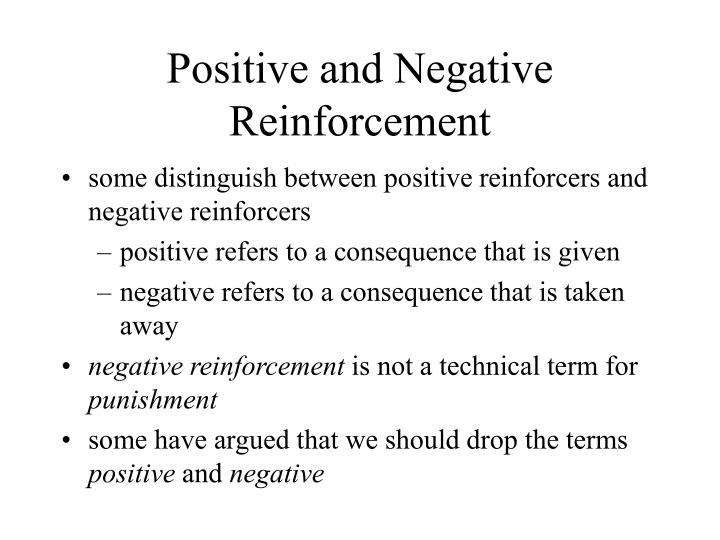

In this case, the annoying behavior was the stimulus which was withdrawn after the brother gave his car to her, which was the response she expected in the first place. For instance, positive can be adding something unpleasant resulting in unpleasant feelings, while negative can be removing something unpleasant resulting in pleasant feelings. When he finally lets her use it, she stops annoying him. That factor can be pleasant or unpleasant. For example, a teenager is constantly annoying her brother to let her use his car for a trip to the mall. In this, an unpleasant stimulus is withdrawn from the equation, once the desired response is generated. Negative reinforcement is slightly different. Hence, he completes all his work, which was the desired response. In this example, the child is enticed with the positive stimulus of being able to watch TV. For instance, a child is permitted to watch television, after he is done with all his homework and chores. Positive reinforcement focuses on granting a favorable stimulus in order to receive the desired response. Reinforcement can be divided into two types, namely, positive and negative reinforcement. As per leading psychologists, the term ‘reinforcement’ can be said to be a certain act or stimulus which elicits a desired effect or response.

As you can see, the goal of both positive and negative reinforcement is to increase desired behaviors. An example of negative reinforcement is allowing the student to leave circle time for a five-minute break after they use a break card. They differ in how they encourage or discourage behaviors. 4 Types of Reinforcement There are four different types of reinforcement. One such aspect is the one that deals with ‘reinforcement’. An example of positive reinforcement is providing a sticker to a student once they’ve completed an assignment. For example, you might buy yourself a new pair of jeans after you reach your target weight or treat yourself to a vacation after you finish a difficult project at work. And many researches have been conducted on this very response to stimuli effect that the mind plays around with. How the mind reads a certain stimulus and how it registers it to form a particular response to it is an interesting thing to notice and observe. Studying human psychology has always fascinated people since ages. It thinks, it anticipates, and it responds. Positive reinforcement: something is added to the mix that makes the behavior more likely to continue or reoccur (i.e., a pleasant consequence is introduced to.


 0 kommentar(er)
0 kommentar(er)
